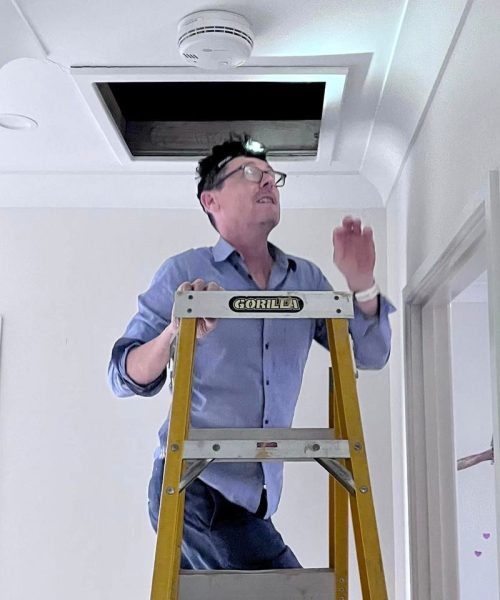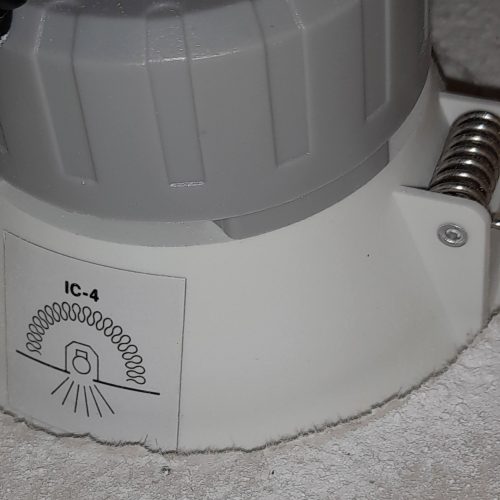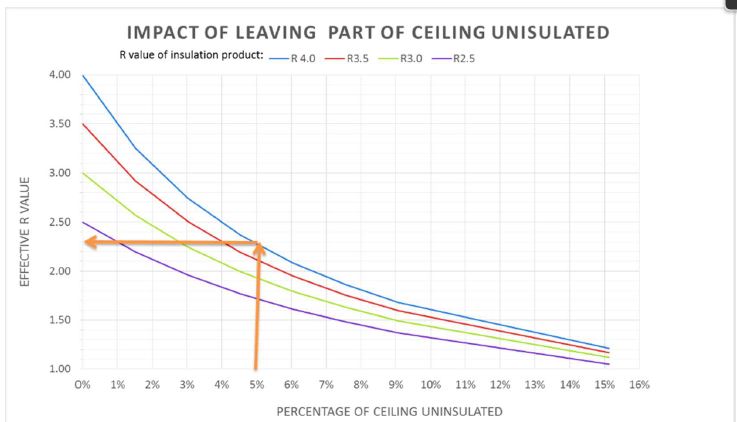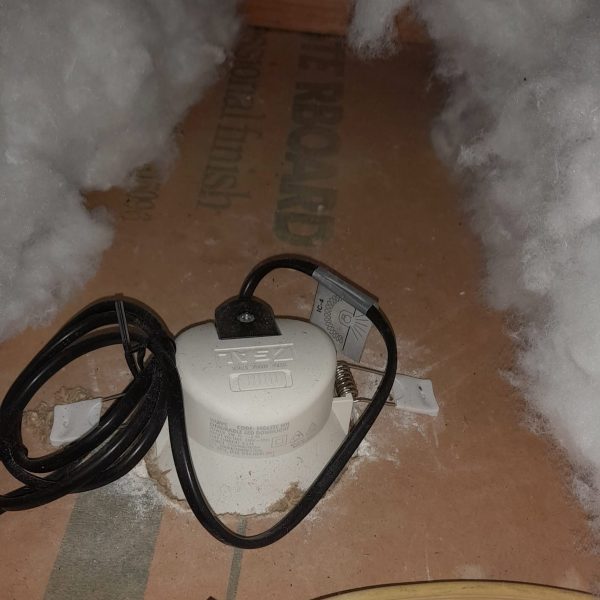
You’d be justified in thinking that the answer to this question was a resounding “YES” – that one of the benefits of LED over halogen downlights is that it isn’t a fire risk to cover them, and so with LEDs you can have a more energy-efficient home. Before I explain why it isn’t quite that straightforward, some background:
The double-disadvantage of halogen
Halogen downlights were all the rage in the 90’s and 00’s. Many houses built or renovated in those decades were filled with them. When I moved into my current home in 2006, all the lights had been changed to halogen and I counted 42 of the little blighters in total… Your home may also have some, or many. So what’s the problem?
- First up, halogen lights use ridiculous amounts of energy, most of which is lost to heat, rather than light. About 60 watts each, compared to about 9W for an LED equivalent.
- That excess heat can not only cause fires, especially if they get covered by anything in the cavity (like insulation) but also add to the heat load of a house that you may be trying to keep cool.
- Because of the fire risk, when people installed insulation they had to leave a space around the lights, thereby compromising the ability of the insulation to form a barrier to the heat of the ceiling cavity, or to keep warmth in the living areas in winter. I’ve attached a chart showing just how much of a compromise these little gaps can cause.
As you can see, halogen downlights are bad-news for a multitude of reasons.
The good news is that an electrician can easily replace halogen downlights with LED equivalents. In some regions the government will even give you a rebate to cover most of the cost (eg NSW, Australia: https://energysaver.nsw.gov.au/…/discounted-energy… ).


The benefits of LED downlights
- They use considerably less energy, hence lower energy bills and a smaller carbon footprint for your household overall.
- produce very little heat
- lower fire risk
and (perhaps:)
- you can properly cover them in insulation (?
 ?)
?)
I have had all 42 of the downlights in my house retrofitted with LEDs, and it recently occurred to me that all of those lights still had a whopping big gap in the insulation around them, from when they were once halogen lights…. and the gaps around halogen lights significantly compromise the building’s thermal performance.
Not one to miss an opportunity to improve my home’s energy efficiency, I lept into action, grabbing a ladder and a roll of fibreglass insulation, pulling the LED lights out of the ceiling (where there’s a room above) and inserting piece of insulation above them. Then I went into the roof cavity to lay insulation over the lights exposed up there. Job done.
But then, I thought to myself- “Are you sure all LED lights can be covered without causing a fire risk?”.
How do you know if an LED light can be covered?
Not all LED lights can be covered with insulation. Each model of light fitting is rated to indicate if it is safe to cover them. Here’s a basic guide for what to look for, and you can also read this webpage for more guidance: https://www.jdlighting.com.au/…/ic-rating-what-are-ic…
In short, you should only cover a downlight if it has one of these ratings on it:
- IC
- ICF
“I.C.” stands for insulation contact. If you can’t see a rating but there’s a model number, try looking up the product specifications, but if in doubt, don’t cover it. And if the light has “CA” or “non IC” on it, definitely don’t. These lights are not designed to cope with the build-up of heat from covering them, causing a fire risk.

Why should you cover downlights when it is safe to do so?
The diagram below shows the impact of leaving sections of your ceiling uninsulated, including around downlight fittings. A general rule of thumb is that a 5% break in cover results in a 50% drop in the overall effectiveness of the insulation, though this varies depending of on the initial rating of the insulation.
Incredibly, I often see LED lights that IC-4 rated and yet been covered in insulation, even when the insulation has been installed after the lights. This is because the insulation installers don’t know the capabilities of this form of light, and follow a blanket (batt?) rule to cut holes in the insulation. Then there are the cases when electricians retrofit IC4 lights and cut away the insulation, because they also don’t know…

Conclusion:
LED lights allow you to improve your home's thermal barrier with complete insulation, but you must do your due diligence that the model of light is designed for that purpose. Be sure to check with trades installing downlights or insulation that they understand the principles outlined above, and the value of installing the correctly rating fixtures and insulating them properly.
Seb Crangle
Home Energy Advisor
March 2024
